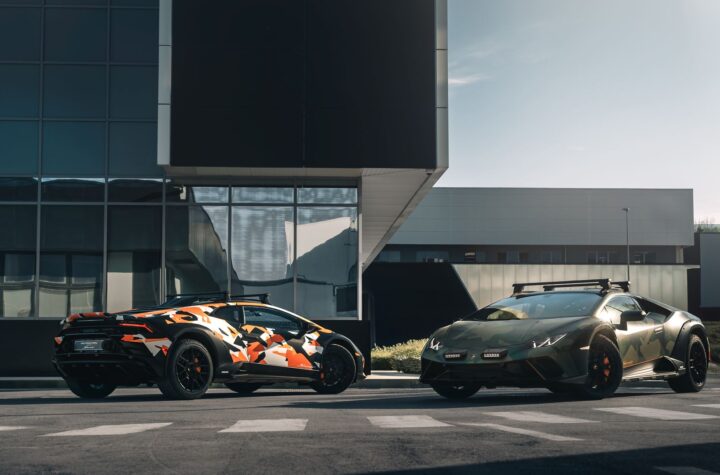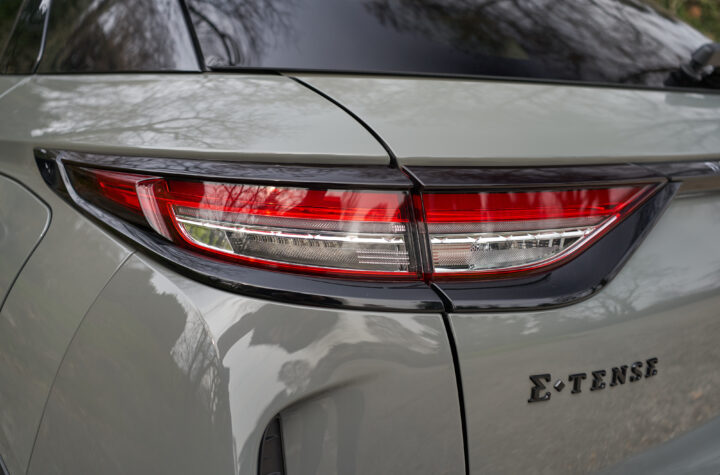
While the current ŠKODA FABIA Rally2 evo started into the 2022 season with WRC2 victory at Rallye Monte-Carlo, the development of the successor model is already in full swing. ŠKODA Motorsport recently tested the new generation ŠKODA FABIA Rally2 under extreme winter conditions in northern Finland. With temperatures falling as low as minus 14 Centigrade and roads deeply covered with snow, WRC2 Champion Andreas Mikkelsen (NOR), WRC star Kris Meeke (GBR) and Finnish Rally Champion Emil Lindholm (FIN) took to the wheel of the development car.
ŠKODA Motorsport customer teams worldwide and their cars have to face all sorts of weather conditions: heat in Africa, heavy rains in Asia, freezing cold in northern Scandinavia. Due to the regulations, category Rally2 cars like the ŠKODA FABIA Rally2 evo have to withstand these conditions with limited technical adaptions only.

“That’s why we test the new generation ŠKODA FABIA Rally2 on as many surfaces and in as many conditions as possible. So, nothing surprises our customer teams, once the car enters competition.”
Jan Krasula, project leader of the development team for ŠKODA Motorsport’s future rally car
With test sessions on all types of tarmac roads and gravel tracks already done, Krasula and his crew headed to the extreme winter of northern Finland.
During the five day test, temperatures above the Arctic Circle fell as low as minus 14 Centigrade. Three experienced drivers took turns at the wheel of the ŠKODA FABIA Rally2 development car: reigning WRC2 Champion and FIA European Rally Champion Andreas Mikkelsen from Norway, five times WRC winner Kris Meeke from Northern Ireland and reigning Finnish Rally Champion Emil Lindholm. They drove the new generation ŠKODA FABIA Rally2 for the very first time on tyres equipped with the aggressive studs typically for Scandinavia. “The goal was not only to test the durability and performance of for example chassis parts and powertrain components under these harsh winter conditions,” Krasula reflects. “Also, we have to make sure, that the crew finds an acceptable comfort level inside the cockpit when it’s freezing outside. For example, the windscreen must not fog up and the onboard temperature must not fall below a certain level.”
After trying various solutions, ŠKODA Motorsport’s technicians as well as the test drivers were happy with the progress.https://www.youtube.com/embed/KLNYShKW4ow?feature=oembed
“I already had a very good feeling with the new generation car on asphalt and gravel. After the recent test, I can confirm that for snow. I feel very, very good in the car. We are definitely on the right track with the development of new generation ŠKODA FABIA Rally2.”

Andreas Mikkelsen
“The whole test went as planned. We have made further progress and once more gained important insights. The ŠKODA Motorsport engineers have been trying different technical configurations. I really enjoyed driving the new generation ŠKODA FABIA Rally2.”
Kris Meeke
Jan Krasula, project leader of development new generation ŠKODA FABIA Rally2, talked to us about the testing process, the preparations and how things went in Finland.
What are you actually testing and how is this kind of testing planned?
Before the test, the engineers who are responsible for the different parts of the car compile a list of requirements. We have to put together a plan to test all these requirements on specific drives in a way that ensures the various aspects we’re testing don’t interfere with each other. It’s not enough to test new components just once, though, so we test them on different courses, each time with different drivers. Even though we have a very detailed plan, in the end we still have to improvise a bit so that as many requirements as possible get properly tested.

What does a standard test day look like?
We start by setting everything up so we’re ready to go at 9 am. Before that, the crew needs to try out the cockpit of the car and do some runs to familiarise themselves with the track. The engineers will set up photocells on the track for measuring times. We usually test until 6 pm. We manage 10-15 runs in a day, with servicing in between to change parts or car setups. After the last run, the engineers and crew do an analysis of the day and the mechanics do an evening service, checking and adjusting the car for the next day. The length of the evening services can vary. Sometimes it’s done in two hours, other times we work past midnight.
What surfaces have you tested the new car on?
We try to test the new car on as many surfaces as possible so there are no surprises for the crews when they start racing proper. We’ve tested on smooth and bumpy asphalt, high-grip and slippery asphalt, in the dry and in the wet. For gravel it’s similar: there we started on sandier surfaces and moved on to stony gravel. We’ve tested the car on slow and fast tracks, and now we’re in Finland on snow and ice.

At what stage is the testing of the new car and what are you focusing on now?
We are slightly past the halfway point. The first thing we checked was that the car was reliable enough. Now we are coming to the end of the phase where we compare various technical solutions and slowly entering the phase when the technical specifications have been finalised and we start working on the setup of the car.
Are you satisfied with the way the winter testing went in Finland?
Yes, we are. First, we had good conditions, and second, we were able to put in lots of kilometres without any major technical problems, which allowed us to get everything we needed done.
In your eyes, what are the main differences between testing racing cars and regular production cars?
Our situation is a bit simpler in that we have one specification for the car – we don’t have to test different engines and gearboxes and or different loads on the car. We also don’t have to deal with crash tests, for example, unlike mass-produced cars. We test with fewer prototypes. On the other hand, we constantly have to disassemble and reassemble our prototypes, we have much less time for testing, and our car has to meet the strict homologation, safety and technical regulations issued by the FIA.






Post simili
AMTS – Auto Moto Turin Show riporta la passione per l’auto a Torino
Lamborghini Huracán Sterrato All-Terrain serie speciale Ad Personam
DS 3 E-TENSE SCOPRE I PASSAGES PARIGINI DI TORINO